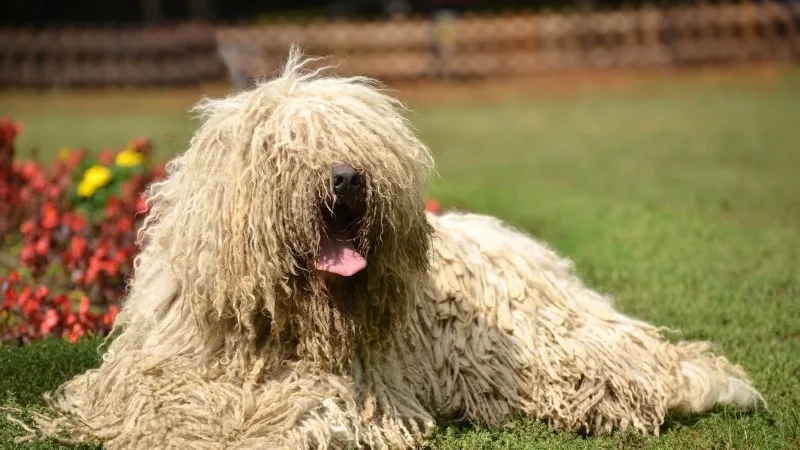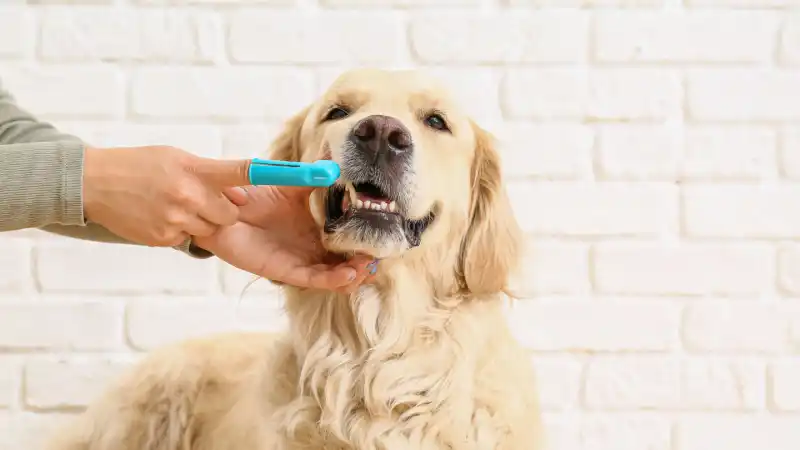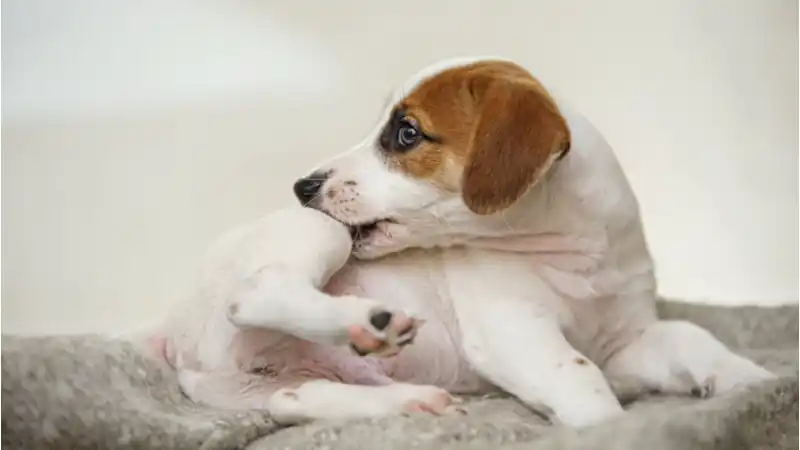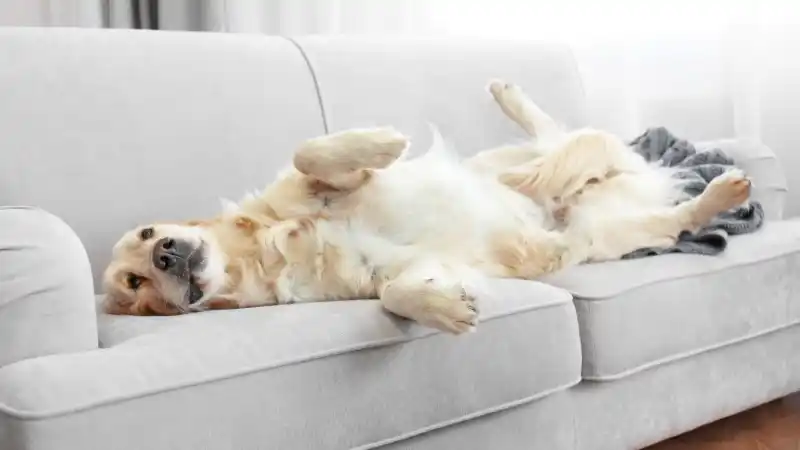7 Tips to Curb Pet Hair Problems
If you're a dog or cat owner struggling with shedding issues, these 7 vet tech-approved tips can help curb your pet hair problems & keep your pet healthy.

Spring has officially sprung, and with the April showers and May flowers comes seasonal shedding. At this time of year, many pets shed their winter coats in preparation for the warmer weather.
The amount that your pet sheds will depend on their coat type and fur length, but all pets will shed to some extent. Some pets shed minimally, while others seem to lose enough hair to knit a sweater!
Shedding may be normal, but it does cause a struggle for many pet owners to keep their furniture, floors, and clothes clean and pet-hair free. If you're struggling with shedding pet hair this spring, these 7 vet tech-approved tips can help curb your pet hair problems.
1. Regular Brushing
No matter what kind of coat your pet has, regular brushing can help control how much they shed and keep their skin and fur clean and healthy.
Brushing your pet's furcan help:
Remove dead hair
Distribute their skin's natural oils
Stimulate the surface of the skin
Get rid of dead and dry skin
You should brush your pet at least every 2-3 days, but some pets may need daily brushing if they have particularly thick or long fur.
2. A Healthy Diet
Your pet's coat health starts from within. If their diet is insufficient in protein or fats (especially fatty acids) their coat may be dull, and they may shed more than usual.
While commercial pet foods are formulated to have the proper amount of vitamins and nutrients, the quality of ingredients in your pet's food can make a big impact on how their body absorbs those nutrients.
If you feed your pet a homemade diet, you also risk your pet being deficient in certain nutrients. Talk with your vet about your pet's current diet to ensure they're getting the right amount of high-quality protein, Omega-3 fatty acids, and Omega-6 fatty acids.
3. Stay Hydrated
Just like your pet's diet, their hydration levels can also have a huge impact on their shedding and overall skin and coat health. When your pet isn't getting enough water, their skin will be dehydrated and their fur will become brittle. This increases hair loss, leading to more fur all over your home.
Make sure that your pet always has access to clean, fresh water, and keep a close eye on their water bowl to monitor how much water they're actually drinking. On a daily basis, dogs should drink 1 ounce of water for every pound of body weight and cats should drink about 3.5-4.5 ounces of water for every 5 pounds of body weight.

Every Dog and Cat Deserves the Pet Insurance of Champions
Get prize-winning care for your pets.
4. Bathe Regularly (But Not Too Much)
Most pets, especially cats that regularly groom themselves, need very few baths throughout the year. During the shedding season in the spring and summer, however, more frequent bathing can help remove dead hair and minimize shedding.
Your pet's coat type, activity level, and current health will dictate how often you can bathe them. And you should consult with your vet before changing anything about your pet's routine.
While a few extra baths during this season can help manage your pet's shedding, too much bathing can strip their skin of its natural oils, leading to dry, itchy skin. Not properly drying your pet's fur after bath time can also lead to inflamed skin and hot spots, so bathe and dry your pet with caution.
5. Use a Shedding Tool
A wide variety of shedding tools are available, from deshedding brushes to shedding shampoo treatments, to help manage your pet's shedding fur.
These tools can be especially helpful for breeds with a double coat and long hair, as they tend to shed the most. Most of these tools are brushes with stainless steel tines that help remove the dead undercoat fur before it sheds from your pet's body.
6. Pet Your Cat or Dog Frequently
If you have a shedding pet, you know what it looks like every time you pet them. In many cases, you end up with clumps of dead hair in your hands, on your clothes, or your furniture. Like brushing, petting your dog or cat helps remove dead fur and keeps their coat healthy.
Petting your pet more frequently can help remove excess fur – and give you lots of fun quality time in the process. You can also use a grooming mitt to help remove even more hair while you pet them. These mitts are worn like an oven mitt, but they have bristles on the palm side that help remove shedding hair while you pet your furry companion like normal.
7. Visit Your Veterinarian
While shedding is a normal part of every pet's life, sometimes an increase in shedding can be a sign of an underlying health issue. If you've noticed an uptick in your pet's shedding, take them in for a check-up with your vet.
Excessive shedding in dogs is often a sign of a hormonal condition or infection.
Common health issuesthat cause hair loss include:
Fleas, ticks, and other parasites
Bacterial and fungal infections
Allergies
Kidney disease
Liver conditions
Thyroid or adrenal issues
Anxiety
Immune disease
It's always better to catch and start treating a health condition early, so book a veterinary appointment as soon as possible.
Can You Stop Your Pet from Shedding?
While all these tips can help you manage your pet's shedding, there's no way to completely stop it.
Some breeds, like Poodles, Yorkshire Terriers, and Schnauzers, may shed less than others, and for those with pet hair allergies, these breeds can help provide some relief. These breeds aren't, however, hypoallergenic.
All pets shed, and it's a natural process to remove dead hair and replace it with new, healthier hair – just like in humans.
The best thing that you can do for your dog or cat is to regularly groom them, keep them hydrated, and feed them a balanced, nutritious diet. With these tips, not only can you help reduce shedding, but you can help your pet live a happier, healthier life.
Pet insurance can also provide support when it comes to keeping your pet healthy. AKC Pet Insurance (underwritten by Independence American Insurance Company) offers an Exam add-on that provides reimbursement for eligible exam fees and office visit charges, which can make regular vet appointments more affordable and help you keep up on routine pet care. Click here to create a custom plan fit for your pet and budget.

Every Dog and Cat Deserves the Pet Insurance of Champions
Get prize-winning care for your pets.

Richard has shared his life with pets since childhood, and currently has a rescue cat and dog. He works with veterinarians and pet businesses to improve their content. To find out more, please visit his [website](https://richardrowlands.com/).
READ MORE ARTICLES

